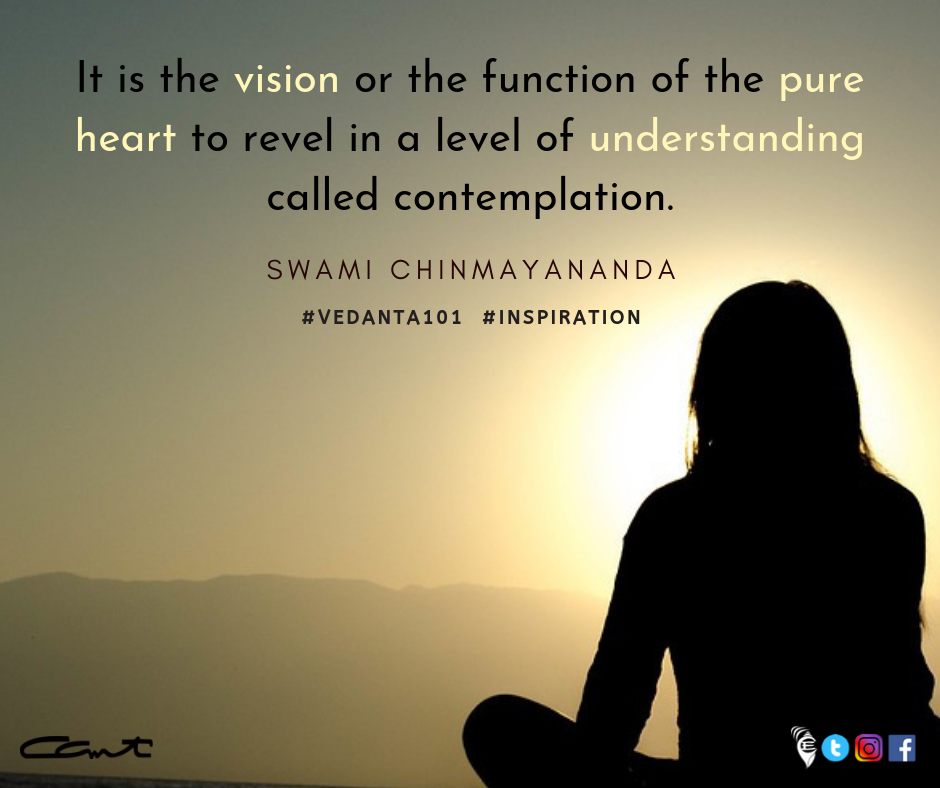Meditation According to the Upanishads - 4. Swami Krishnananda
========================================================================
----------------------------------------------------------------------------------------------
(Spoken on January 14th, 1973)
These features of analysis given in the Upanishads are brought together into a focus in the Mandukya Upanishad, which is perhaps the most important of all the Vedantic texts from the point of view of Vedantic sadhana. It is said that for the liberation of the soul, the Mandukya alone is sufficient because that gives us the quintessence of Upanishadic teaching. The external and the internal are brought together here in a universal analysis. The main method of meditation according to the Upanishads is given to us in the Mandukya Upanishad. It is too short and, therefore, difficult of an easy analysis unless it is studied together with the comparative statements made in respect of it in the other Upanishads also.
The Mandukya Upanishad is an analysis of the states of consciousness because the Vedantic meditation of the Upanishads is mainly a meditation on consciousness. Consciousness is the Supreme Being, prajñānam brahma, and, therefore, a study of consciousness is imperative in a meditation on consciousness. The bound soul is a state of consciousness, the liberated soul is also a state of consciousness, and meditation is a condition of consciousness. The whole of the Upanishadic teaching is, therefore, a huge essay on consciousness.
Thus, entering into a study of the states of consciousness, the Mandukya Upanishad gives us a beautiful exposition of at least three of the strata of consciousness, which we generally call the waking, the dream and the sleep states. These states are states of consciousness, the condition through which our essential being passes in respect of its object. There are no states for consciousness. It is eternal. But yet it appears to have states when it sets itself in opposition to its object. The three states mentioned here are really three states of conflict of consciousness with its object, a subject which we mentioned yesterday. If the consciousness is not set in opposition to its object, there would be no states at all. But there are objects of consciousness, and it is these objects that create a series of states. The difference in the states of consciousness is due to the difference in the kind of object that is presented to consciousness in the different states. When the objects change in their relationships and intensity, the consciousness also seems to change.
To be continued ....
========================================================================
----------------------------------------------------------------------------------------------
04/09/2019
(Spoken on January 14th, 1973)
4.
----------------------------------------------------------------------------------------------
These features of analysis given in the Upanishads are brought together into a focus in the Mandukya Upanishad, which is perhaps the most important of all the Vedantic texts from the point of view of Vedantic sadhana. It is said that for the liberation of the soul, the Mandukya alone is sufficient because that gives us the quintessence of Upanishadic teaching. The external and the internal are brought together here in a universal analysis. The main method of meditation according to the Upanishads is given to us in the Mandukya Upanishad. It is too short and, therefore, difficult of an easy analysis unless it is studied together with the comparative statements made in respect of it in the other Upanishads also.
The Mandukya Upanishad is an analysis of the states of consciousness because the Vedantic meditation of the Upanishads is mainly a meditation on consciousness. Consciousness is the Supreme Being, prajñānam brahma, and, therefore, a study of consciousness is imperative in a meditation on consciousness. The bound soul is a state of consciousness, the liberated soul is also a state of consciousness, and meditation is a condition of consciousness. The whole of the Upanishadic teaching is, therefore, a huge essay on consciousness.
Thus, entering into a study of the states of consciousness, the Mandukya Upanishad gives us a beautiful exposition of at least three of the strata of consciousness, which we generally call the waking, the dream and the sleep states. These states are states of consciousness, the condition through which our essential being passes in respect of its object. There are no states for consciousness. It is eternal. But yet it appears to have states when it sets itself in opposition to its object. The three states mentioned here are really three states of conflict of consciousness with its object, a subject which we mentioned yesterday. If the consciousness is not set in opposition to its object, there would be no states at all. But there are objects of consciousness, and it is these objects that create a series of states. The difference in the states of consciousness is due to the difference in the kind of object that is presented to consciousness in the different states. When the objects change in their relationships and intensity, the consciousness also seems to change.
To be continued ....
========================================================================



.jpg)

Comments
Post a Comment